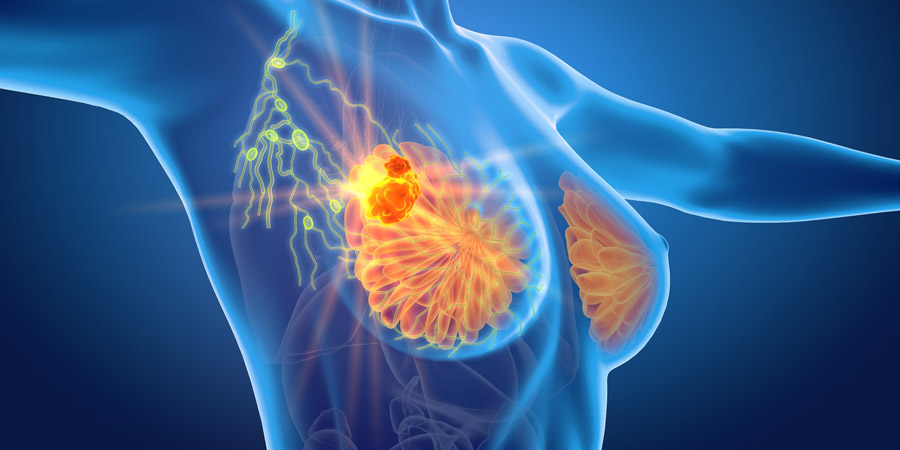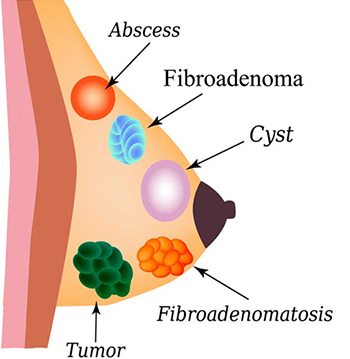Fibrocystic Breast Disease Treatment in Faridabad, Delhi Ncr
Get the Best Fibrocystic Breast DiseaseTreatment in Faridabad from Highly experienced Surgeon Dr. Pankaj Hans. ✓ Fibrocystic Breast Disease Surgeon, ✓ Fibrocystic Breast Disease Treatment, ✓General Surgery, Book an Appointment Today!
What is benign breast disease?
Both women and men can develop benign (noncancerous) breast lumps. This condition is known as benign breast disease. While these breast changes aren’t cancerous or life-threatening, they may increase your risk of developing breast cancer later on.
Benign breast lumps in women are common. Up to half of all women will experience fibrocystic changes that cause noncancerous breast lumps at some point in their lives. Fluctuating hormone levels often cause these breast tissue changes.
Men can develop enlarged, swollen breasts with lumps, a condition called gynecomastia
Predisposing factors:
- Family history of breast cancer or benign breast disease.
- Hormone replacement therapy.
- Hormonal imbalance.
What are the types of benign breast disease?
There are many different types of benign breast disease. Most of the following types don’t increase cancer risk and don’t require treatment:
- Fibroadenomas: These are the most common noncancerous solid breast tumors found in women ages 15 to 35. Fibroadenomas don’t increase cancer risk.
- Fibrocystic breast changes: Fluctuating hormone levels can make breasts feel lumpy, dense and tender, especially right before menstruation. Women ages 30 to 50 are more likely to experience fibrocystic breast changes.
- Breast cysts: Up to a quarter of breast lumps are fluid-filled cysts. Breast cysts can be tender and lumpy, but they don’t make you more prone to cancer.
- Hyperplasia: This condition occurs from an overgrowth of cells that line mammary ducts or glands. A condition called usual hyperplasia doesn’t increase cancer risk and doesn’t require treatment. If you have atypical hyperplasia, we recommend surgical removal of affected breast tissue because the condition may make you more prone to breast cancer.
- Intraductal papilloma: These are small, wart-like growths from inside the mammary duct near the nipple. Intraductal papilloma may cause nipple discharge. The condition most commonly affects women ages 30 to 50. Risk of cancer goes up if you have five or more papillomas at one time. Surgery can remove these growths and reduce your cancer risk.
- Mammary duct ectasia: Menopausal and postmenopausal women are more prone to mammary duct ectasia. Patient may experience an inverted nipple or nipple discharge when swollen, inflamed milk ducts are blocked. Also known as periductal mastitis, this condition doesn’t increase cancer risk. Antibiotics is required to reduce the bacterial infection caused by inflammation and blockage.
- Traumatic fat necrosis: These breast lumps form when scar tissue replaces breast tissue that’s been damaged by an injury, surgery or radiation therapy. These lumps don’t raise cancer risk and don’t need treatment.
Causes:
- Changes in breast tissue (fibrocystic breast changes).
- Breast infection (mastitis)
- Scar tissue from a breast injury.
- Hormone fluctuations, especially during menstruation, pregnancy or menopause.
- Medication use, such as hormonal contraceptives (birth control pills) and hormone replacement therapy.
- Caffeinated beverages.
What are the symptoms of benign breast disease?
- Breast changes or a lump while doing a breast self-exam, showering or getting dressed.
- Breast pain (mastalgia).
- Nipple discharge.
- Change in breast size, shape or contour.
- Inverted, creased or scaly nipple.
- Dimpled, puckered or scaly breasts.
Management and Treatment
- Fine needle aspiration to drain fluid-filled cysts.
- Surgery to remove lumps (lumpectomy): Certain types of benign breast disease, such as atypical hyperplasia, make you more prone to breast cancer. Sometimes, benign breast lumps become painful and enlarge in size. You may require surgery to remove painful lumps. Unfortunately, some fibroadenoma lumps come back after surgery.
- Oral antibiotics for infections like mastitis.
Avail of the most Advanced Treatment of Fibrocystic Breast Disease Treatment in Faridabad, Delhi Ncr by our experienced General surgeon Dr. Pankaj Hans. Meet the Best General Surgeon for Fibrocystic Breast Disease Treatment in Faridabad, Delhi NCR. Book an Appointment Today!
Make an Appointment

